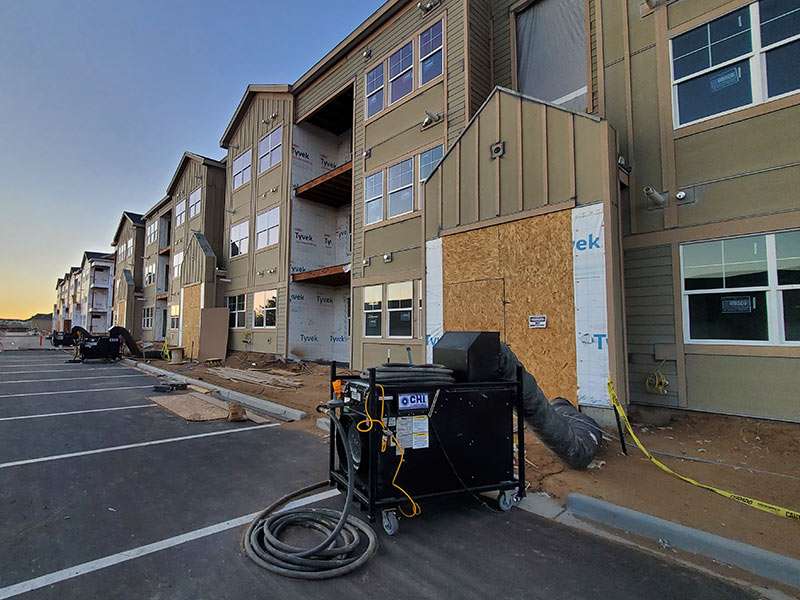Construction projects persist throughout the year, enduring various weather conditions, from heavy rains to oppressive heat and severe snowstorms. While concerns about heat-related syndromes like heat cramps, heat exhaustion, or heat stroke are lessened during winter, significant risks still arise during the colder season. Here are three major risks to consider:
Cold Stress:
Temperatures near or below freezing, or powerful and constant winds, can wreak havoc on the body’s external and internal systems. Exposure to such conditions can result in serious health issues, including frostbite, trench foot, and hypothermia if the internal body temperature drops below 95 degrees Fahrenheit. For outdoor construction sites, it’s crucial to ensure that workers have access to warm and insulated areas where they can recover from exposure to the cold. Providing appropriate protective clothing and implementing safety measures can help mitigate these risks and prioritize the well-being of your workforce.
Falls:
The presence of ice, particularly when concealed by snow, poses a serious safety hazard on construction sites. Beyond the risk of workers suffering serious injuries, such as slips and falls, your company could be liable for any accidents. This risk is exacerbated by the fact that many construction workers are often tasked with hauling heavy equipment or materials around, increasing the potential for accidents. To mitigate these risks, it’s essential to take proactive measures to keep areas warm, snow-free, and well-salted. Regularly clearing snow and applying salt to icy surfaces can help prevent accidents and ensure a safer working environment for your workforce. Additionally, implementing proper training and safety protocols for navigating icy conditions can further reduce the likelihood of accidents and injuries.
Snow Removal:
Outdoor construction during winter presents challenges, especially when facing frequent snowstorms. Clearing snow buildup from the site becomes a recurring task, posing risks to workers, particularly those tasked with removing snow from roofs, decks, or scaffolding. These workers are exposed to higher risks of accidents and falls. To mitigate these risks, it’s essential to prioritize worker safety by ensuring they wear fall-protective gear, such as harnesses and safety lines, when working at heights. Additionally, snow removal methods, such as long-handled snow rakes, should be used to minimize the need for workers to put themselves in dangerous positions. Implementing proper training and safety protocols for snow removal tasks can further reduce the likelihood of accidents and injuries, helping to maintain a safer working environment on the construction site.
Summary
Snow and ice present significant hazards on construction sites during long, harsh winters. However, ensuring the comfort and safety of your workers, including maintaining their internal body temperature, is equally crucial. Temporary heating solutions for construction, such as propane heater rentals, play a vital role in achieving this goal.
By implementing temporary heating solutions, you can mitigate the risk of frostbite, slips, and spills caused by cold temperatures. Whether it’s through HVAC rentals or rental heaters, a variety of temporary heating options are available to address the specific needs of your construction site, regardless of location or environmental conditions. Prioritizing the well-being of your workers through adequate heating not only enhances their comfort but also helps maintain productivity and safety throughout the winter months.

